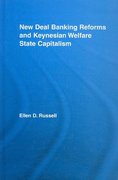Question
Case Exercise 1 (Chapter 1) Larger-scale turbines increase the electricity more than proportionately to the increase in costs. A 1 megawatt turbine (Large turbine) costs
Case Exercise 1 (Chapter 1)
- Larger-scale turbines increase the electricity more than proportionately to the increase in costs.
- A 1 megawatt turbine (Large turbine) costs $2.6 million, with the remaining equipment costs unchanged ($1.5 million), for a total required investment of $4.1 million to power approximately 760 households.
- Electricity revenue over 15 years rises to $7.2 million in discounted present value.
A) What conversion factor (CF) allows cost recovery of this larger-scale turbine?
Exercise Question 2-
-In context to Question 2, be sure to indicate:
- The baseline NPV of the large-scale turbine (excluding the load-shift technology ("remaining equipment costs"))?
- The NPV including the load-shift technology ("remaining equipment costs")?
- The conversion factor for the large-scale turbine including the load-shift technology?
- Is the large-scale turbine a viable option? (15 points)
** (More From Instructions) **
- an analysis for each turbine with different conversion rates
- small one (case 1) has an NPV of 4.4 so it is given
- no need for any cash flows since all the NPVs are stated in the text, so you need to pick the correct cost
- NPV will have to be adjusted for turbine's efficiency - conversion factor
-Finally, calculate the breakeven CF for both the Utsira pilot project and the large-scale turbine (the point at which the CF causes total costs to equal total discounted revenue). Compare and contrast the CFs and provide some context for the pros and cons of each option. (10 points)
*(Helpful Notes/Data)*
- There are (2) different turbines (small and large-scale) and different levels of their efficiency (100%, but not a chance, more like 70 or 60% conversion rate)
- (Small turbine) 0.6 megawatt turbine costs $1.2 million today and will generate $4.4 million in discounted net present value of electricity over a 15-year period
- With the load-shift technology (remaining equipment costs) the capital investment rises from $1.2 million to $2.7 million
- states "wind power can be quite profitable with full cost recovery periods as short as seven years under ideal operating conditions"
- In Hydro's load-shifting process, about 30 percent (30%) of the maximum energy coming directly to the electrical grid from the turbines generator when the wind is blowing hard and steady is lost
- Experiments at Utsira site suggest that baseline output of Hydro's pilot project in Norway has a maximum energy conversion factor (CF) of 70% with 60% more typical.
- Even lower 45% CFs are expected in typical operating conditions elsewhere
- 70% CF realizes $3.1 million of electricity per turbine.
*Note: The CF x discounted net present cash flows = total realized discounted net present cash flows. Therefore, at 100% CF, a 0.6 megawatt wind turbine generates $4.4 million in realized discounted net present cash flows (1.00 x $4.4 = $4.4).
** (Data Regarding the Large-Scale Turbine is Located in the Problem at the Top of the Page**
** (This was all the information my professor and the textbook provided that was relative to the problem(s), I apologize for any inconvenience, but ask that you help with whatever is possible if you can please)**
-Thank you very much.
Step by Step Solution
There are 3 Steps involved in it
Step: 1

Get Instant Access to Expert-Tailored Solutions
See step-by-step solutions with expert insights and AI powered tools for academic success
Step: 2

Step: 3

Ace Your Homework with AI
Get the answers you need in no time with our AI-driven, step-by-step assistance
Get Started


